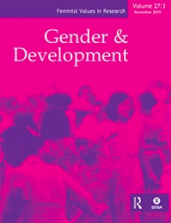A survivor behind every number: using programme data on violence against women and girls in the Democratic Republic of Congo to influence policy and practice

Overview
Designing and implementing programmes that seek to respond to, and prevent, violence against women and girls (VAWG) saves lives and mitigates the consequences of such violence for survivors. With the right evidence about the scale and nature of VAWG, practitioners, donors, and policymakers can improve programming, support VAWG services where they are needed, and develop policies to address VAWG. The International Rescue Committee (IRC) is a leading international non-government organisation (NGO) with VAWG programmes in over 18 countries worldwide, and it is one of the only NGOs with a dedicated technical unit on women’s protection and empowerment. It has over ten years of experience in the Democratic Republic of the Congo (DRC), a country where reports of pervasive acts of violence against women and girls have attracted significant international attention. With a strong emphasis on evidence-based and evidence-generating programming, the IRC carefully collects VAWG data as part of the services provided to up to 3,000 VAWG survivors per year in the DRC. In this paper, the IRC shares its experience on VAWG data, and how this information can be interpreted as well as how it is often misinterpreted.
This article is hosted by our co-publisher Taylor & Francis. For the full table of contents for this and previous issues of this journal, please visit the Gender and Development website.
Keywords
Additional details
Author(s)
How to cite this resource
Citation styles vary so we recommend you check what is appropriate for your context. You may choose to cite Oxfam resources as follows:
Author(s)/Editor(s). (Year of publication). Title and sub-title. Place of publication: name of publisher. DOI (where available). URL
Our FAQs page has some examples of this approach.
Causing Hunger: An overview of the food crisis in Africa

Oxfam in Gender Emergencies Standards 2022-25

Oxfam Gender in Emergencies Strategy 2022-25

